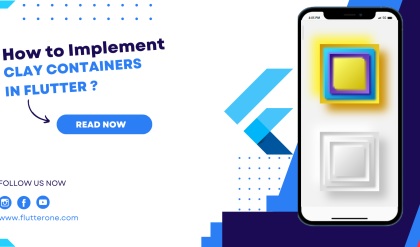In a Flutter application, it’s essential to handle errors effectively and provide meaningful error messages to users. Error handling not only prevents crashes but also enhances the user experience by informing users about issues and guiding them towards solutions. In this article, we will explore various approaches for handling errors and displaying appropriate messages within the user interface of a Flutter application. We’ll cover techniques like error dialogs, snackbar notifications, and custom error screens, empowering you to build user-friendly and robust Flutter apps.
Error Dialogs
Showing an Error Dialog
Error dialogs are modal dialogs that display error messages in a pop-up window. They are useful for presenting critical errors that require user attention. When an error occurs, you can show an error dialog to inform the user about the problem and provide additional instructions or options.
Example: Showing an Error Dialog
void showErrorDialog(BuildContext context, String errorMessage) {
showDialog(
context: context,
builder: (BuildContext context) {
return AlertDialog(
title: Text('Error'),
content: Text(errorMessage),
actions: [
TextButton(
child: Text('OK'),
onPressed: () {
Navigator.of(context).pop();
},
),
],
);
},
);
}
In the above example, we define a function showErrorDialog that takes the BuildContext and the error message as parameters. It creates an AlertDialog widget with the error title and message. The dialog is shown using the showDialog function, and the user can dismiss it by tapping the “OK” button.
Snackbar Notifications
Displaying a Snackbar
Snackbar notifications are non-modal notifications that appear briefly at the bottom of the screen. They are ideal for displaying informative messages or non-critical errors that don’t require immediate user interaction. Snackbars are often used to provide feedback or instructions to the user.
Example: Displaying a Snackbar
void showSnackbar(BuildContext context, String message) {
final snackbar = SnackBar(content: Text(message));
ScaffoldMessenger.of(context).showSnackBar(snackbar);
}
In the above example, we define a function showSnackbar that takes the BuildContext and the message as parameters. It creates a SnackBar widget with the provided message and displays it using ScaffoldMessenger.of(context).showSnackBar(snackbar).
Custom Error Screens
Building a Custom Error Screen
Custom error screens provide a dedicated screen to display detailed error information along with options for recovery or further actions. They are useful when handling critical errors or situations where the user needs to take specific actions to resolve the issue.
Example: Custom Error Screen
class ErrorScreen extends StatelessWidget {
final String errorMessage;
ErrorScreen(this.errorMessage);
@override
Widget build(BuildContext context) {
return Scaffold(
appBar: AppBar(
title: Text('Error'),
),
body: Center(
child: Column(
mainAxisAlignment: MainAxisAlignment.center,
children: [
Icon(
Icons.error_outline,
size: 100,
color: Colors.red,
),
SizedBox(height: 20),
Text(
'Oops! Something went wrong.',
style: TextStyle(fontSize: 18),
),
SizedBox(height: 10),
Text(
errorMessage,
style: TextStyle(fontSize: 16),
),
SizedBox(height: 20),
ElevatedButton(
onPressed: () {
// Perform recovery or further actions
},
child: Text('Retry'),
),
],
),
),
);
}
}
In the above example, we create a ErrorScreen widget that takes the error message as a parameter. It displays an error icon, the error message, and provides an option for the user to retry or perform further actions. You can customize the screen layout and add additional functionality based on your application’s needs.
Conclusion
Handling errors and displaying appropriate messages is crucial for providing a smooth and user-friendly experience in your Flutter application. By employing approaches like error dialogs, snackbar notifications, and custom error screens, you can effectively communicate errors to users and guide them towards resolutions or actions. Remember to tailor the error handling approach to the specific context and severity of the error. With these best practices, you can enhance your Flutter app’s reliability and user satisfaction. Happy coding!






